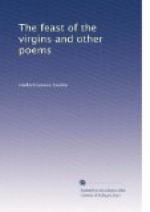[33] Pronounced Tah-tahn-kah—Bison or Buffalo.
[34] Enah—An exclamation of wonder. Eho—Behold! see there!
[35] The Crees are the Knisteneaux of Alexander Mackenzie. See his account of them, Mackenzie’s Travels, (London, 1801) p. xci to cvii.
[36] Lake Superior. The only names the Dakotas have for Lake Superior are Mede Tanka or Tanka Mede—Great Lake, and Me-ne-ya-ta—literally, At-the-Water.
[37] April—Literally, the moon when the geese lay eggs. See note 71.
[38] Carver’s Cave at St. Paul was called by the Dakotas Wakan Teepee—sacred lodge. In the days that are no more they lighted their council-fires in this cave and buried their dead near it. See Neill’s Hist. Minn., p. 207. Capt. Carver in his Travels, London, 1778, p. 63, et. seq., describes this cave as follows: “It is a remarkable cave of an amazing depth. The Indians term it Wakonteebe, that is, the Dwelling of the Great Spirit. The entrance into it is about ten feet wide, the height of it five feet, the arch within is near fifteen feet high and about thirty feet broad. The bottom of it consists of fine clear sand. About twenty feet from the entrance begins a lake, the water of which is transparent, and extends to an unsearchable distance; for the darkness of the cave prevents all attempts to acquire a knowledge of it. I threw a small pebble toward the interior parts of it with my utmost strength. I could hear that it fell into the water, and notwithstanding it was of so small a size it caused an astonishing and horrible noise that reverberated through all those gloomy regions. I found in this cave many Indian hieroglyphics which appeared very ancient, for time had nearly covered them with moss so that it was with difficulty I could trace them. They were cut in a rude manner upon the inside of the walls, which were composed of a stone so extremely soft that it might be easily penetrated with a knife: a stone everywhere to be found near the Mississippi. This cave is only accessible by ascending a narrow, steep passage that lies near the brink of the river. At a little distance from this dreary cavern is the burying-place of several bands of the Naudowessie (Dakota) Indians,” Many years ago the roof fell in but the cave has been partly restored and is now used as a beer cellar.




